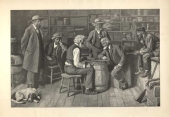The Checker Maven
The World's Most Widely Read Checkers and Draughts Publication
Bob Newell, Editor-in-Chief
Published every Saturday morning in Honolulu, Hawai`i
Noticing missing images? An explanation is here.
Principles of Strategy

Checkers is sometimes compared to a war game, with the players taking on the role of opposing Generals, commanding their respective forces of Red and White warriors. Fortunately, this analogy only goes so far; although checker combat can be sharp and demanding, it is happily of a peaceful, intellectual nature.
But much as war has its well-evolved principles of strategy, checkers too is a game of a highly strategic nature (though tactics often come to the fore). Checker strategy, however, is a topic that has generally not been well elaborated in checker literature. Literally only a handful of books have dealt in-depth with this facet of the game.
One of these books is Principles of Strategy in the Game of Checkers, the only published book by the late Brooklyn champion Louis Ginsberg. Dealing with the critically important Dyke positions, and published over 65 years ago, the book remains relevant and vital today with its insightful notes and clear elucidation of strategic principles.
This little book has long been out of print, but today we are releasing a newly-typeset electronic edition, which you can download at once here. We owe thanks to a mysterious "Mr. T." who provided us with carefully corrected interpreted scans of the original and helped greatly in moving the project forward. The book is available in PDF format and can easily be printed on plain letter paper if you prefer hard copy.
Let's take a quick peek at one of the positions in the book. It arises from the following play. Notes are taken from the book; notice the remarkable clarity and insight the author provides.
11-16---A 24-20 16-19---B 23x16 12x19 22-17---C 10-15---D 25-22---E 8-12---F 27-24---G 7-10---H 20-16---I 2-7---J 32-27---K 4-8 27-23 9-14---L 30-25---M 5-9---N; forms diagram
A---The Bristol opening which often assumes a "Dyke" formation.
B---Black takes command of 19 and expects to develop the "Dyke" if the opportunity offers.
C---A weak move, but generally made by the uninformed. Again the importance of 22-18 is noted, for if Black has visions of the center, the man on 18 must be removed by the 9-14 exchange (10-14, although sound, leads to a complicated formation of a different nature).
D---Black begins to mass his pieces as shown in previous examples.
E---White must try to establish his position and break up the coming "Dyke."
F---This move must eventually be made to support the piece on 19. If 7-10, trying to establish the formation too quickly, White goes 20-16 and spoils the "Dyke" as pointed out in Example 1.
G---The ever present defense in these formations, to be followed by 32-27, when the time comes, as explained before.
H---The text move is given to illustrate how a strong formation can be wrecked. It is proper to go 4-8 for if 32-27 comes next, 7-10 and the "Dyke" is very strong. If White tries 20-16 after 7-10 then 3-7 is the key move for the attack, eliminating the trunk game.
I---Threatening square 11, explained in Example 1.
J---Black gets ready to attack the piece on 16, having in mind 4-8 followed by 8-11. If White plays 16-11, 7-16, 24-20, then 3-8, 20-11, 19-23, etc.
K---White's destination is 18.
L---It is quite evident something must be done to stop the impending attack against the man on 15.
M---Threatening the three for two. This type of move in similar positions should always be considered as a threat against 18, a strategic point.
N---Nothing else to be done.
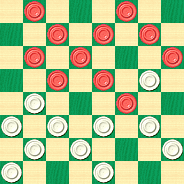
WHITE
White to Play and Win
W:W31,29,28,26,25,24,23,22,21,17,16:B19,15,14,12,10,9,8,7,6,3,1.
It's not as hard as it looks; can you break the Dyke or will the position hold water? It's up to you; solve the position and click on Read More to "leak" the solution.![]()
An Easy Stroke

We're not golfers ourselves, but we'll wager that even for less experienced players, the stroke above would be a pretty easy one and rather hard to miss. Still, we're glad that we're not the ones who have to play it!
In the same spirit, this week's column brings you a stroke problem that is rated as quite easy by its author, and indeed, it doesn't have the decidedly scary look of many another stroke problem.
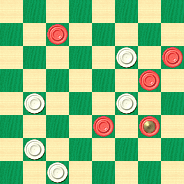
WHITE
White to Play and Win
W:W11,17,19,25,30:B6,12,16,23,K24.
Now, we can't put this one off with the claim that we don't play checkers, and it would be unseemly to say "better you than us" in this case. In truth, the problem isn't half as hard as you might think, and we did try it out and solved it quickly enough. We've not set this one up as a speed problem, but time yourself and see if you can solve it in 15 seconds or less; then click on Read More to verify your solution.
Remember, a gentle tap will do it ... ![]()
Basic Checkers Part Eight

Many of us believe that Jim Loy never sleeps, for this Bozeman, Montana-based Renaissance man is so prolific and turns out so much high-quality work that we can't believe there are enough hours in the day for him to get it all done. But he does, and though he's never revealed his secret, we're most happy and appreciative to benefit from his efforts.
What does Jim do? A visit to his website, jimloy.com, will tell you--- Jim does everything. From bowling to chess to tennis to billiards, there seems to be little that doesn't interest him, and he does nothing halfway. Fortunately for us, Jim takes a serious interest in checkers, too, and has lately been working on a series of projects aimed at restoring and correcting the classic works of the game.
Jim's checker books sell for a relatively nominal price on the American Checker Federation website. You'll find problem books, game books, and more; but today we want to focus on Jim's newest work, Basic Checkers Part 8: Corrections.
If you've read The Checker Maven for the past few months, you'll know that we recently participated in a reissue of Richard Fortman's seminal work, Basic Checkers. In our reissue, we reproduced the book with its original content; while we corrected obvious typos and other errors, we did not update or correct the actual game play. Mr. Loy's new book does exactly that; he provides us with just under a hundred pages of corrected or alternative lines of play. The book is the culmination of an effort Jim began in 2006, and gathers together work originally published in the ACF Bulletin as well as new work.
As an illustration, and also as this week's problem position, let's look at play in the 11-15, 22-17, 9-13 opening (taken from Part 8, page 57, note I).
11-15 22-17 9-13 17-14 10x17 21x14 8-11 23-19 15-18 19-15 4-8 24-19 6-10 15x6 1x17 25-21---A 17-22 26x17 13x22 27-23 18x27 32x23; forms diagram.
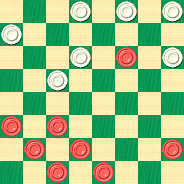
BLACK
Black to Play and win
B:W31,30,29,28,23,21,19:B22,12,11,8,7,5,3,2.
A---26-22 or 25-22 draw instead.
Black wins here in an unexpected and quite sophisticated manner. Finding the win may prove a difficult problem, but this one is good enough to merit considerable effort. So do try to work it out and then click on Read More for the solution and notes.![]()
Checkercycle:Video Instruction on the Web
What would you think about watching some videos to help improve your checker play? Wouldn't it be great to have someone talk you through a game played by the masters, or describe how to win a difficult ending? It'd be the next best thing to having a personal tutor.
We're happy to report that checker video instruction is alive and well on the internet! The YouTube media site contains a substantial and growing collection of instructional material, but one name stands out: Checkercycle, the creator of dozens of video tutorials of unquestionably high quality.
Now, we know who this gentleman is, and with the serious checkers crowd in America being a relatively small fraternity, you might know too. But we note that in his videos, Mr. Checkercycle's face is seldom shown, so we're not telling, even though the info he gave us in an email interview will surely give away this not so well-kept secret. Here's the discussion we had with this extraordinary man of checkers.
CM: You are clearly a knowledgeable player. Do you play tournaments? Have you won any titles or the like?
CC: I played in the NYC 2005 3-move and won 1st place in the minors. I was also in the 2007 Yonkers Open GAYP, taking 2nd place, and in the Jim Morrison Nationals in 2009, taking 3rd place in the majors.
CM: You must have a good checker library. Tell us about it, and how you obtained it--- a difficult thing these days.
CC: My first book was The Wonderful World of Checkers and Draughts by Tom Wiswell, which I got the from the library. I then got Straight Checkers Gold from Al Lyman, which had about eight books in the teaching program. I then started going to Checker Maven and Jim Loy's site, and as I found out more information thanks to these great sites, I started buying books from Amazon and ABE.com. My friends bought me books at the tournaments and I bought them also; we helped build each other's collections. I liked all the Tom Wiswell and William Ryan books. I like the Richard Pask and Robert Pike's books too. It is hard to get books and that is something I would like to change. I am happy that I will be able to buy the Basic Checkers at the National Tournament. The fact that it also supports the youth is such a beautiful thing and I would like to thank you for your hard work.
CM: What got you interested in making tutorial videos?
CC: One day I was showing my friend a game I played on the internet on a small magnetic board and he made a video of it. I thought how nice it would be on a big board, and because books are so hard to get, I could encourage others people to play this fine game. I kept on trying to come up with new ideas as I went along.
CM: How many videos have you made?
CC: So far I've made about 50 videos.
CM: How's the response been--- lots of viewers, feedback, etc.?
CC: At first I got very few comments but the ones I did get were positive. Then I got some more feedback, and I listened to what the players were telling me and asking me to do. I have to give them a lot of credit for their ideas.
CM: What's in store for the future for Checkercycle?
CC: I am looking forward to playing in the National Checker tournament on August 1st in Springfield, Illinois. The people I have met have been great. I had the pleasure of playing a 96 year old gentleman last year and meeting many great people. It was a lot of fun and I'm looking forward to more tournaments. I'd like to continue doing video and I'd like to improve my game along the way. I always want to help people play checkers and see the beauty of the game. I feel that exercise, checkers or chess and socializing is a good way to stay young and I have that 96 old gentleman who is still playing in tournaments as a fine example. (He did beat me in our contest that day.) He must have some great stories to tell and I hope I get to hear them.
CM: What do you think is in store for the future of the game itself?
CC: The game should continue to grow because of the internet, and the many devoted people from the ACF, and the people who help tell the stories and make the game so enjoyable like the Checker Maven. I know that it not easy with so many different games and with the popularity of chess. However I think checkers and chess are very good games and a lot of fun.
CM: Any advice to the up-and-coming generation of checker players?
CC: The next generation of checker players could really be outstanding, and with the help of computers, videos, checker sites and the support of the checker clubs, we could see the next masters be younger and be equal to the great players of the past. Only time will tell. The tools of learning the art of checkers are being happily shared with the young and not so young players . The beauty of the game, the fun of the game has always been there to enjoy for everyone.
CM: Anything you'd like to add, say, recommend, etc.?
CC: I started playing checkers when I was about 7 years old with my Dad, and we played for hours at a time. When I came out of the Army I continued to play checker games with him. I will always have that memory and will cherish it. The internet came along and gave me the chance again to play the game that I grew up to love.
Checkercyle's home page on YouTube can be found here, and we highly recommend that you go there and take the time to view the material he presents so effectively in his video presentations.
And now let's try a problem, taken from Checkercycle's video on the classic Payne's Draw. The position is shown below.
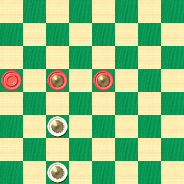
WHITE
Black to Play, White to Draw
B:B13,K14,K15:WK22,K30.
Try it out and click on Read More to see the solution. Then be sure to check out Checkercycle's other great checker lessons. You'll be glad you did and we'll guarantee that you'll learn something.![]()
21st Century Checkers

Today is a very special one as, thanks to the generosity of Grandmaster Richard Pask, we release an electronic version of 21st Century Checkers 9-13s, which is the first volume of an envisioned series of seven, covering all the accepted opening ballots. More than an extension or rework of Mr. Pask's earlier Solid Checkers (which will also be reissued by us in mid-2011), Mr. Pask has used the computer to take a fresh and comprehensive look at three-move play. The new book contains nearly 15,000 checker moves; consider that Richard Fortman's monumental Basic Checkers contains about 50,000 moves total in all seven parts, and you'll realize the enormous scope of Mr. Pask's new initiative.
The book can be downloaded here, and will eventually appear on our Richard Pask page, as linked in the right-hand column. If you wish to make a printed copy, be aware that the book makes extensive use of color and printing in black-and-white or grayscale may not be satisfactory.
Without a doubt this is a book you will want to have.
So, let's have a quick look! As an example of the book's content, and for this week's problem offering, here is a position that arises out of the 9-13 22-18 6-9 ballot.
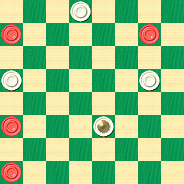
BLACK
Black to Play and Draw
B:W31,20,17,K10:B28,25,12,4.
Black's pieces are on the edge of the board and White has a king. How can Black save this one? "Book" your solution and then click on Read More to learn where to find the answer.![]()
Honoring the Underdog: The Common Man
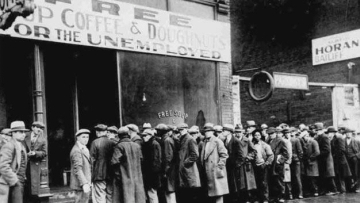
Each year, The Checker Maven celebrates the Labor Day holiday by recognizing the common man, the regular guy or gal who has always been the mainstay of our game of checkers, and most importantly of all, the backbone of what makes America great. Day in and day out, this "regular" guy or gal punches in at work, turns in an honest day's labor, and moves the American economic engine forward.
At least, that's how it's been until the last little while, in which the American worker has become something of an underdog, struggling to make a living if he or she even has a job at all. In the economic meltdown of the past couple of years, many a hard working, honest Joe or Jane has been thrown out of work and left to fend for his or her own self, while the Wall Street elite continue to get their million-dollar bonuses.
You'll have to excuse us if we seem, well, unhappy about all of this, because we believe in hard work and honest living; today that doesn't always make the grade, and it just isn't right. But we still, and always, salute the American worker: we know you deserve a better deal and one day, you'll regain the pride of place that is rightfully yours.
We know you didn't come here to talk politics and social theory, and so we do have a checker problem that seems to fit with this week's theme. Take a look at the diagram below.
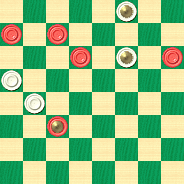
WHITE
White to Play and Draw
W:W17,13,K11,K3:BK22,12,10,6,5.
You surely see what we mean. White (the worker) is the real underdog here; he's a piece down and doesn't have a lot of options (sound familiar?). Black (the fat cat) is a piece up and is ready to squash White under his thumb. But all White wants is a square deal (represented here by getting a draw).
Can you get the fair shake that is rightfully yours, or will you be ground up in the wheels of power? "Work" out the problem and then click on Read More to "claim" the solution.![]()
Triple Threat
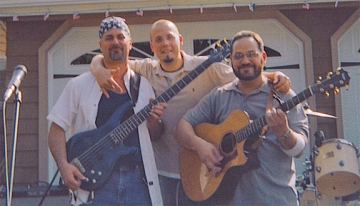
The term "Triple Threat" has a number of meanings, arising at least originally in the world of sports. The one we knew about was a football triple threat--- someone who can run, pass, and kick, as we recall. Apparently there is a triple threat position in basketball, with which we are wholly unfamiliar. And other uses abound, both in and out of sports, but with similar intent. Above, we have pictured a band called Triple Threat, who have played in the Boston, Massachusetts area. We imagine they base their band's name on the fact that there are three members. But when we tried to find out more, we soon discovered that numerous other bands around the United States are also called "Triple Threat."
Our checker school "Triple Threat" follows a similar pattern. We have three different checker positions, which have some similarities: Black has four pieces to White's three, and the formations are at least somewhat alike. But as we know, small differences are everything in checkers, and so in two of the positions White can draw but in the third, White is lost.
BLACK
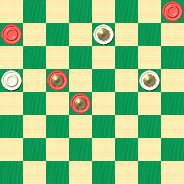
WHITE
White to Play and Draw
W:WK7,13,K16:B4,5,K14,K18.
BLACK

WHITE
White to Play and Draw
W:WK3,K11,K14:BK4,5,K23,K24.
BLACK
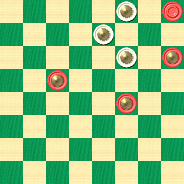
WHITE
Black to Play and Win, 2 Ways
Black shown at top for consistency
with other positions
B:WK3,K7,K11:B4,K12,K14,K19.
Are you yourself a "Triple Threat," which in this case means you can solve all three positions? Or are you a "Double Threat," a "Threat," or "No Threat At All"? Solve the problems, and we promise not to threaten anything if you click on Read More to reveal the solutions, a sample game, and detailed notes.![]()
Goldsboro's Guillotine
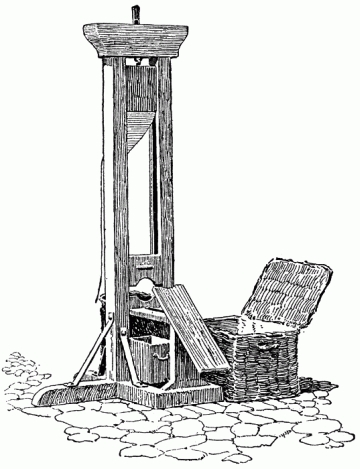
Off with their heads! Madame Guillotine was a very busy worker during the time of the French Revolution, and many a poor victim was lead out to encounter her deadly embrace. Fortunately, today's Checker Maven column uses this imagery in a much more peaceful manner, as Willie Ryan, in his book Tricks Traps & Shots of the Checkerboard, brings us a checker position which fits the metaphor to perfection. You'll see what we mean when you play through the game and solution. Willie is a bit brief about this one, perhaps because it does indeed speak for itself.
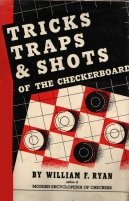
"Tailor Tom Goldsboro, one of England's foremost living players, does a nice job on this Dundee shot, which reveals a novel series of exchanges seldom seen in stroke tactics:
| 12-16 | 24-15 | 10-14 |
| 24-20 | 10-19 | 18-9 |
| 8-12 | 18-15 | 5-14 |
| 28-24 | 11-18 | 29-25 |
| 3-8 | 22-15 | 14-18 |
| 23-18 | 13-22 | 20-16---A, 1 |
| 9-13 | 25-18 | 19-23 |
| 21-17 | 7-10 | 16-11---2, which |
| 16-19 | 26-22 | leads to the |
| diagrammed | ||
| position. |
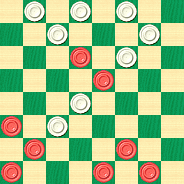
BLACK
Black to Play and Win
B:W32,31,30,27,25,22,15,11:B23,18,12,8,6,4,2,1.
A---Heading for a fall. The following sews up a draw without strain or pain: 30-26, 2-7, 22-17, 12-16, 20-2, 1-5, 2-9, 5-30, 27-23, 18-27, 32-16, 30-23, 15-10, drawn."
1---Play has been textbook perfect to this point, but one slip is all it takes in close and complex positions. The computer now rates the game as favorable for Black but not necessarily a forced win ---Ed.
2---Definitely loses. The computer gives 15-10 as having much better chances, though Black retains a good edge---Ed.
Can you slice and dice this position, or will your efforts be cut off? We certainly hope not, and dropping your mouse on Read More will lead you, not to the guillotine, but to the solution.![]()
Checkers in Hawai`i: A Grand Success

Mililani Town Center, Mililani, Hawai`i
In an earlier Checker Maven column, we reported on what was then the upcoming unofficial Hawai`i State Checker Tournament, to be held at the Mililani Town Center in Central O`ahu. Today, we're happy to report further that the tournament was a grand success with an excellent organizational effort turned in by tournament director Geoffrey Pang.
The tournament took place on July 24, 2010, in the gazebo area of the Town Center. Nine adults and seven youth players turned out on a warm and sunny Hawaiian summer morning, with just the gentlest of cool breezes to accompany some very hot checker action.
Play took place in two sections, adult and youth; the format was single-knockout, random pairing, with each match played for the best of five games. The finals in each section were best of seven. Director Pang was aided by assistant tournament director Brandon Ho and a number of game referees. A Go-As-You-Please tournament open to all skill levels, the Director told players that the only real requirement was to have a good time and enjoy the games.
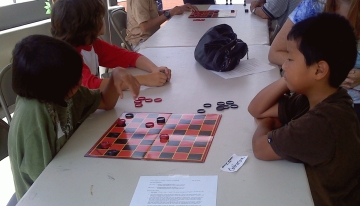
Keiki Division Championship Match
Action was fast and furious as with each successive round, the field got smaller, finally narrowing down to just two players in each section. It was time to play for the championship! The Keiki (children's) Section championship round came first. Championship contestants were Kobe and Prescott (in conjunction with our publication of photos, we only give first names for the protection of the children). After a spirited struggle, Kobe won the match, a $50 gift certificate, and the title of Unofficial Hawai`i State Keiki Checker Champion. Prescott won the title of runner-up and a $25 gift certificate.

Kobe is the Keiki Champion
The adult section finals took place between veteran player Harold Afuso and none other than your Checker Maven editor. Play went the full seven games with one win each and five draws. A sudden death phase then took place, and Mr. Afuso won the next game to become Unofficial Hawai`i State Checker Champion. With the title went a $100 gift certificate. Your editor was declared runner-up and received a very nice $50 gift certificate.

Harold Afuso, Unofficial Hawai`i State Checker Champion
And did the players have fun? If the photos in this column don't tell you that clearly enough, you can view our full, unedited set of photos here.
Director Pang describes himself simply as a checker enthusiast who wishes to promote checker play. Clearly, much time and effort went into this tournament, and Mr. Pang feels it was worthwhile. He is already planning next year's tournament, with an eye to working with the American Checker Federation to have the next tournament winner recognized officially as State Champion.
The Checker Maven thanks Mr. Pang for his efforts in promoting the great game of checkers in beautiful Hawai`i. We also want to thank the Town Center of Mililani for their civic-minded support of the tournament. Not only did they provide space and logistical assistance (at no charge), they donated $225 in prize money in the form of gift certificates. Hawaiian checker players certainly owe these folks thanks and patronage in recognition of their spirit of aloha.
Games weren't recorded, but we noted that the 9-14 Double Corner opening was seen frequently (and rather surprisingly). We looked through our library and found a game that was quite similar to one that we recall being played in the tournament. We'll give you the run-up to the diagram below and then ask you to finish the game by finding the winning path.
9-14 23-18 14x23 27x18 12-16 18-14 10x17 21x14 6-9 14-10 7x14 22-18 14x23 26x12 11-15 25-22 8-11 29-25 1-6 24-19 15x24 28x19 6-10 22-18 4-8 25-22 9-13 31-27 2-6 27-23 11-16 30-25 5-9 18-15 10-14 25-21---A
A---22-18 was necessary here for White to draw.
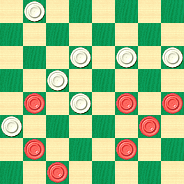
BLACK
Black to Play and Win
B:W32,23,22,21,19,15,12:B16,14,13,9,8,6,3.
Now, picture yourself in Hawai`i at the Mililani Town Center gazebo. It's about 11 AM, the temperature is around 84 F, and there is a soft breeze off the mountains. It's your move. You're playing for the state championship and a very nice first prize award. And once you wrap up the game, you know you'll head back to the south shore for a cool drink, a swim in the Pacific, and a relaxing couple of hours on the beach. So let's get on with it!
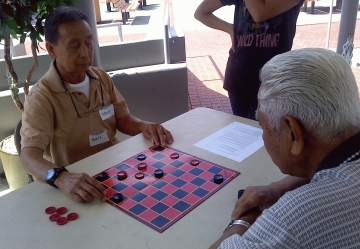
2nd Round Action in the Adult Division
Cinch the win, then click on Read More to check your solution. And if you couldn't make the tournament this year, plan a Hawaiian vacation for tournament time next year. You won't be disappointed!![]()
Pyramids

The pyramids conjure up images of ancient mystery, of the secrets of a long gone era, of a certain spine-tingling strangeness. We're sure you understand what we mean.
While the pyramid concept in checkers is somewhat less spine-tingling, nevertheless, there has for decades been a certain mystique, if somewhat short of mystery, surrounding it. As set forth by its colorful proponent, Julius D'Orio, we are asked to believe that maintaining a pyramid formation at the bottom of our side of the board is the key to success. But alas, checkers is never so simple, and to paraphrase checker pundit Jim Loy, "Sometimes it wins, sometimes it loses."
This month's speed problem contains a mini-pyramid of three white pieces in the middle of the board, and at first glance, it surely looks like it isn't exactly favorable. But, like the pyramids of old, the checkerboard conceals many secrets. Can you--- in fifteen seconds or less--- find the secret of this position?
When you're ready, click below to display the setup and start the clock; then come back and click on Read More to verify your solution.
August 2010 Speed Problem (easy, 15 seconds)
![]()
The Checker Maven is produced at editorial offices in Honolulu, Hawai`i, as a completely non-commercial public service from which no profit is obtained or sought. Original material is Copyright © 2004-2025 Avi Gobbler Publishing. Other material is public domain, as attributed, or licensed under Creative Commons. Information presented on this site is offered as-is, at no cost, and bears no express or implied warranty as to accuracy or usability. You agree that you use such information entirely at your own risk. No liabilities of any kind under any legal theory whatsoever are accepted. The Checker Maven is dedicated to the memory of Mr. Bob Newell, Sr.

